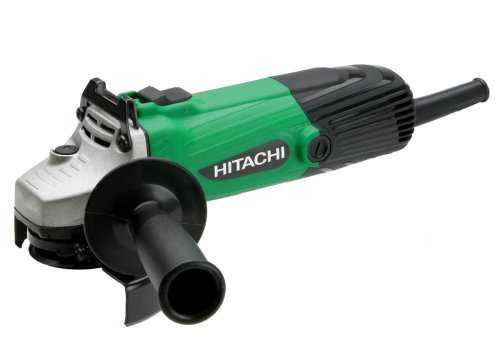There are generally four kinds of photography lenses that every wedding photographer should have in his or her gig bag:
4 1 2 Angle Grinder
Wide-Angle Zoom
Wide-to-Telephoto Zoom
Image-Stabilized Telephoto Zoom
Prime/Portrait Lenses
4 1 2 Angle Grinder
Wide-Angle Zoom
Wide-angle zoom lenses are one of the most important photography lenses that every wedding photographer should have, typically 17mm to 35mm in length with a fixed aperture of f/2.8. They provide a large depth of field, making it simple to have foreground and background in focus. They are an indispensable wedding photography equipment which allows versatility in confined areas such as a small banquet room or crowded dance floor. While shorter photography lenses allow you to capture more details, wide-angle zoom lenses allow you to capture more reactions and atmosphere to tell a richer story.
To elaborate further, wide-angle zoom photography lenses allow you to shoot a wider perspective of moments happening around the major subject, hence providing a bigger picture of the entire event. For example, wide-angle photos have the capability to tell "stories within a story", allowing you to reveal more of the story behind the shot. This is essential for a good photojournalistic wedding photography. As events surrounding weddings are so time sensitive, good photography lenses will allow you to capture as many actions or emotions in the quickest time as possible.
When used in a venue such as the church or ballroom, wide-angle zoom photography lenses also magnify the grandeur and spaciousness of the area, which encapsulates the creative feel for a photojournalistic wedding photography.
However, you need to be selective of the scenes or actions using wide-angle photography lenses, as a caveat to shooting wide is that it creates some body distortion, particularly when a subject is photographed close-up. Generally, people tend to look heavier and shorter on the edges, while arms can look huge. The last thing you want is to have the bride cursing you for making her look like she has put on 10 pounds! To get around this problem, you should as far as possible avoid putting the bride and groom at the edges of the wide-angle distortion. In addition, wide-angle photography lenses might also introduce distracting or unwanted elements into the frame, which would otherwise ruin a picture perfect moment.
Wide-to-Telephoto Zoom
Wide-to-telephoto lenses are the single most important photography lenses that a wedding photographer cannot do without. They should ideally be lenses that cover somewhere around the 20-70mm focal length range with an aperture of f/2.8. This ideal range lets you get wide enough to take a group photograph and close enough to capture facial emotions in your candid shots or a three-quarter portrait of a couple without the undesirable effects of wide-angle perspective distortion. They also double as good lenses for portraits. Given just this lens, you would be able to capture most of the shots needed for a wedding decently well.
Image-Stabilized Telephoto Zoom
Image-stabilized telephoto zoom lenses are also essential items in your wedding photography equipment checklist. The 70-200mm focal length is an important range for wedding ceremony photos. It allows you to give your subjects more space in situations where you don't want to get in the way. As you will often be photographing down the aisle from the back of the church, image-stabilized telephoto zoom lenses will come in very handy. 200mm is long enough to be able to take 3/4 length images of the bride and groom exchanging their vows while staying at a reasonable distance away from the action and 70mm is wide enough to take in the bridesmaids or groomsmen as a group without switching photography lenses.
A good point to note is that when using such photography lenses, nice blurred background can be achieved with maximum wide apertures of f/2.8 and long focal lengths of 200mm or 300mm, whether you are using a full-frame or a small sensor body. This allows you to isolate the subject from its background, and to focus attention on the image as the main subject you want to portray. Such photography lenses are especially useful for shots where you are unable to get in close and for intimate and private moments, where you want to be an unobserved stranger at a distance. Some examples include a stolen glance, a mischievous grin, a kiss - the details that are effectively conveyed by the emotions. Image-stabilized telephoto zoom photography lenses hence play an important role in capturing such moments.
These image-stabilized telephoto zoom photography lenses aren't only good for blurry backgrounds or shooting events from a distance. They could also be used to photograph stunning facial close-ups from creative angles above or below the subject that don't exhibit the normal distortions of large chins or shrinking heads that come from wider photography lenses.
Yet another advantage of such photography lenses is that you can use the small-sensor camera's 1.5x crop factor to your favour. The 200/2.8 long end of the standard zoom effectively becomes 300/2.8, a lens that would cost 00 for a full-frame camera. The effective 300mm length allows for more creative photo angles than shorter photography lenses, such as tightly cropped images of the groom's hands lifting the bride's veil or the bride and groom's hands while they put rings on each others fingers.
The obvious disadvantage of image-stabilized telephoto zooms is that in many cases, long photography lenses tend to disconnect the subject from the main scene and there might be little to no context as to why the subject may have had expressed how they were feeling, the whereabouts of the subject and who else was there.
When using a small-sensor camera as your primary or backup body, the other disadvantage of image-stabilized telephoto zoom lenses is that neither Nikon, Canon or Sony make an f/2.8 lens that gives you an effective 70-200mm focal length. Hence, you would have to pay the high price and carry the weight of photography lenses designed for a full-frame camera.
Canon's Image-Stabilization, Nikon's Vibration-Reduction and Sony's SteadyShot INSIDE systems are indispensable in allowing you to hand-hold these large and heavy long photography lenses, especially in low light situations. Every wedding photographer should ensure that the image-stablization and vibration-reduction features are available on their long lenses. You might also want to consider using a tripod to ensure continuous, accurate subject placement and sharp photos. Such telephoto zoom photography lenses are huge investments and if you have a budget constraint or an amateur just starting out, you might want to consider rental instead.
Prime Lenses
Prime lenses are essentially photography lenses with fixed focal lengths, as opposed to zoom lenses, which have variable focal lengths of say 24-70mm or 17-55mm. Prime lenses generally have a better optical quality than zoom photography lenses, and usually come with wider maximum apertures such as f/2.8 or f/1.8.
Good prime lenses are must-have photography lenses for any wedding photographer, as they are excellent for taking good portraits. Although you will be adequately equipped for a wedding shoot with the three zoom lenses in your lens kit as discussed above, it is worth including two to three fast prime lenses in your bag as well. These photography lenses are compact, light, and fairly inexpensive and would probably be needed in about 10 to 20% of a wedding shoot.
Faster prime photography lenses are ideal in situations where f/2.8 aperture is not enough to get the motion-stopping shutter speed or shallow depth of field desired, whether for artistic or technical reasons. For example, an image that requires a 1/20th of a second shutter speed at f/2.8 will only require 1/60th of a second at f/1.8, forming a distinction between a sharp image and a blurry one. Many professional wedding photographers actually include prime lenses in their gig bags as an economical backup to their zoom lenses. Not many people could afford to purchase an additional 70-200mm f/2.8 telephoto lens as a backup and you also want to prevent a frantic situation whereby your photography lens fails on you during a crucial moment.
There are many prime lenses available on the market but most photographers would include a 28/1.8, 50/1.8, and 85/1.8 in their prime photography lenses kit to be used on a full-frame body. The 28mm is wide enough to cover most ceremony locations and confined spaces, the 50mm is good for small groups or a priest blessing a couple, and the 85mm is long enough for ceremony vows and exchange of rings. A wedding can be successfully photographed with just these three photography lenses.
Wedding Photography Lenses That Every Photographer Can't Do Without
4 1 2 Angle Grinder
Oct 26, 2011 01:14:12

Click for larger image and other views
 >> Click here to update Cheapest prices for Makita 9564CV 4-1/2-Inch Angle Grinder <<
>> Click here to update Cheapest prices for Makita 9564CV 4-1/2-Inch Angle Grinder <<
Makita 9564CV 4-1/2-Inch Angle Grinder Feature
- Powerful 12 AMP motor design for increased output power in a more compact tool
- Super Joint System (SJS) helps prevent gear damage
- 5 stage variable speed control dial for matching the RPM to the work
- Electronic limiter stops the motor and reduces accidental motor overload and burnout
- 1 year warranty
Makita 9564CV 4-1/2-Inch Angle Grinder Overview
Makita's 4-1/2-Inch SJS Angle Grinder combines 12 AMP variable speed power with comfort and motor-protection features for longer-lasting stone grinding and polishing performance. The 9564CV is engineered with Makita's innovative Super Joint System (SJS) to protect the gears for longer tool life.
 |

View larger |
|
| 9564CV Features | | POWER - 12 AMP motor delivers 2,800 - 10,500 RPM | | PERFORMANCE - Super Joint System (SJS) helps prevent gear damage | | SPEED - Variable speed (2,800 - 10,500 RPM) | | DURABILITY - Labyrinth construction, zig-zag varnish and thicker coil wires for longer tool life | | INCLUDES - Grinding wheel, wheel guard, side handle, inner flange, lock-nut, and wrench |
|
| Tool Specifications |  | | Grinding wheel | 4-1/2" | | Wire cup brush | 3-1/2" | | Sanding disc | 4-1/2" | | No load speed | 2,800-10,500 RPM | | Spindle thread | 5/8"-11 UNC | | AMPS | 12.0 | | Vibration | 5.0 (m/s^2) | | Overall length | 11-3/4" | | Net weight | 4.0 lbs. |
|
12 AMP Power with SJS to Protect GearsThe 9564CV is powered by a 12 AMP motor with soft start for smoother start-ups. The five-stage variable speed dial (2,800 - 10,500 RPM) allows the user to match the RPM to the application. The electronic limiter stops the motor and reduces accidental motor overload and burnout, and the electronic speed control maintains consistent speed under load. Labyrinth construction protects the motor with a complex set of channels, prohibiting dust and contamination. In addition, the protective zig-zag varnish seals the motor and bearings from dust and debris by creating a barrier under rotation. The 9564CV is engineered with SJS, an innovation from Makita that protects the gears by automatically disengaging the motor should the grinding wheel accidentally catch or bind.
Comfort and Ergonomics
The 9564CV is built with comfort and ergonomic features for extended use. The grinder weighs just 4 pounds with a lock-on switch for easy operation. In addition, the side handle can be easily installed on either side of the tool, and the "tool-less" wheel guard adjustment provides easy clamping.
Variable Speed for Stone Work
The 9564CV is a versatile and powerful grinder with variable speed, allowing the user to set the RPM to the material. The variable speed control feature makes the 9564CV ideal for stone work, including polishing and grinding. The 9564CV is just another example of Makita's commitment to innovative technology and best-in-class engineering.
About Makita's Super Joint System (SJS)
 Super Joint System (SJS) is an innovation from Makita engineering where the motor armature and spiral bevel gear are linked by a coil spring. If the grinding wheel catches or binds, the coil spring relaxes and disengages the gears from the motor. As the grinding wheel stops, the gears and motor are protected. Makita's growing line of SJS-equipped grinders includes models ranging from a 1/4" die grinder to a 7-inch angle grinder.
Super Joint System (SJS) is an innovation from Makita engineering where the motor armature and spiral bevel gear are linked by a coil spring. If the grinding wheel catches or binds, the coil spring relaxes and disengages the gears from the motor. As the grinding wheel stops, the gears and motor are protected. Makita's growing line of SJS-equipped grinders includes models ranging from a 1/4" die grinder to a 7-inch angle grinder.
 About Makita
About Makita
Makita is a worldwide manufacturer of industrial quality power tools and offers a wide range of industrial accessories. Makita applies leading-edge innovation to engineer power tools that are more compact and energy efficient, yet deliver industrial strength power and results. Makita U.S.A., Inc. is located in La Mirada, California, and operates an extensive distribution network located throughout the U.S. For more information, please call 800/4-MAKITA (800/462-5482) or visit makitatools.com. Makita is Best in Class Engineering.
Warranty
Every Makita tool is thoroughly inspected and tested before leaving the factory. If you are not satisfied with any Makita tool within 30 days of purchase, return it and Makita will provide a replacement or refund. Each Makita tool is warranted to be free of defects from workmanship and materials for the period of ONE YEAR from the date of original purchase. Should any trouble develop during this one-year period, return the COMPLETE tool, freight prepaid, to one of Makita's Factory or Authorized Service Centers. Please see makitatools.com for complete details.
What's in the Box
Makita 9564CV 4-1/2-Inch 12 AMP Variable Speed SJS Angle Grinder, 4-1/2-inch grinding wheel, side handle, wheel guard, inner flange, lock nut and lock nut wrench.
SAVE NOW on the special offers below!
Available In Stock. |
| This Makita 9564CV 4-1/2-Inch Angle Grinder ships for FREE with Super Saver Shipping. |
|

Limited Offer Today!! Makita 9564CV 4-1/2-Inch Angle Grinder Black Friday and Cyber Monday Deals
Classy Halloween Decor Sonos Music System Tablet Android Wifi













 Super Joint System (SJS) is an innovation from Makita engineering where the motor armature and spiral bevel gear are linked by a coil spring. If the grinding wheel catches or binds, the coil spring relaxes and disengages the gears from the motor. As the grinding wheel stops, the gears and motor are protected. Makita's growing line of SJS-equipped grinders includes models ranging from a 1/4" die grinder to a 7-inch angle grinder.
Super Joint System (SJS) is an innovation from Makita engineering where the motor armature and spiral bevel gear are linked by a coil spring. If the grinding wheel catches or binds, the coil spring relaxes and disengages the gears from the motor. As the grinding wheel stops, the gears and motor are protected. Makita's growing line of SJS-equipped grinders includes models ranging from a 1/4" die grinder to a 7-inch angle grinder. About Makita
About Makita










